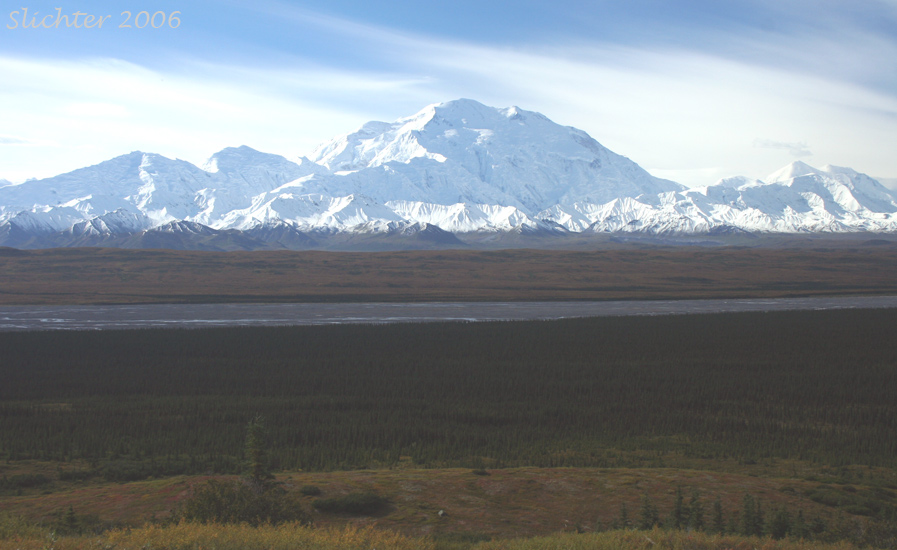

The tundra is found in polar regions of the world, or at high elevations above treeline in mountainous areas in temperate and tropical regions of the world. Tundra is typically referred to as a cold desert due to low annual rainfall (moisture is locked up in the permafrost or is frozen in glaciers or ice covering the surface of the surrounding sea). Typical dominant vegetation includes both of the pioneer plants known as lichens and mosses as well as some low shrubs. Wildflowers appear and disappear quickly during the brief summers. Because temperatures are so cold, very little decomposition occurs and soils do not develop and are thus thin. The winds are strong and drying, so plants tend to be small to escape the harm done by the wind.
Rainfall:
Average Monthly Rainfall Range: 0-20 mm
The tundra gets very little precipitation throughout the year.
Temperature:
Average Monthly Temperature Range: -25 to 10 C.
Temperatures on the tundra tend to be the coldest of any of the biomes we study. Temperatures are bitterly cold in winter and occasionally rise to the point in summer where one can be outside without a sweater.
Threats to the Tundra:
1) Damage to tundra lands due to oil and natural gas production.
2) Global warming is melting the permafrost, allowing succession to replace the dominant lichens, mosses and low shrubs with larger shrubs and small trees.
[Tropical Rainforest] [Temperate Deciduous Forest] [Temperate Grasslands] [Chaparral/Shrublands] [Desert] [Tundra]